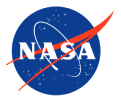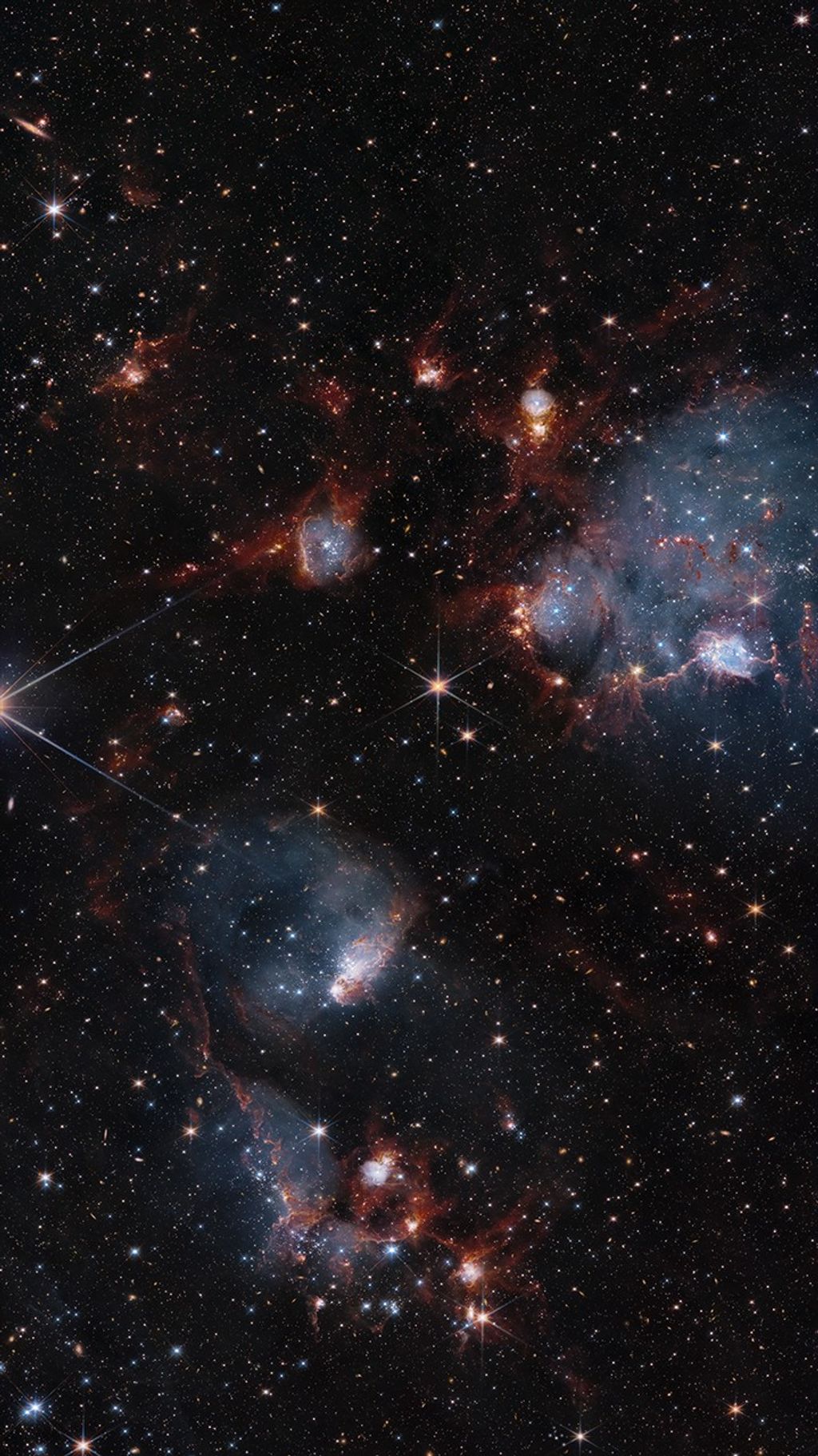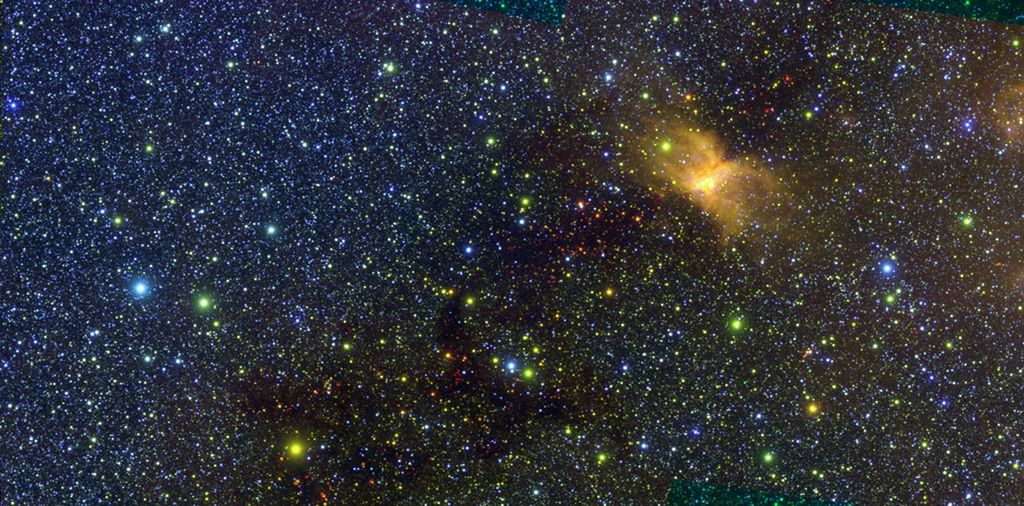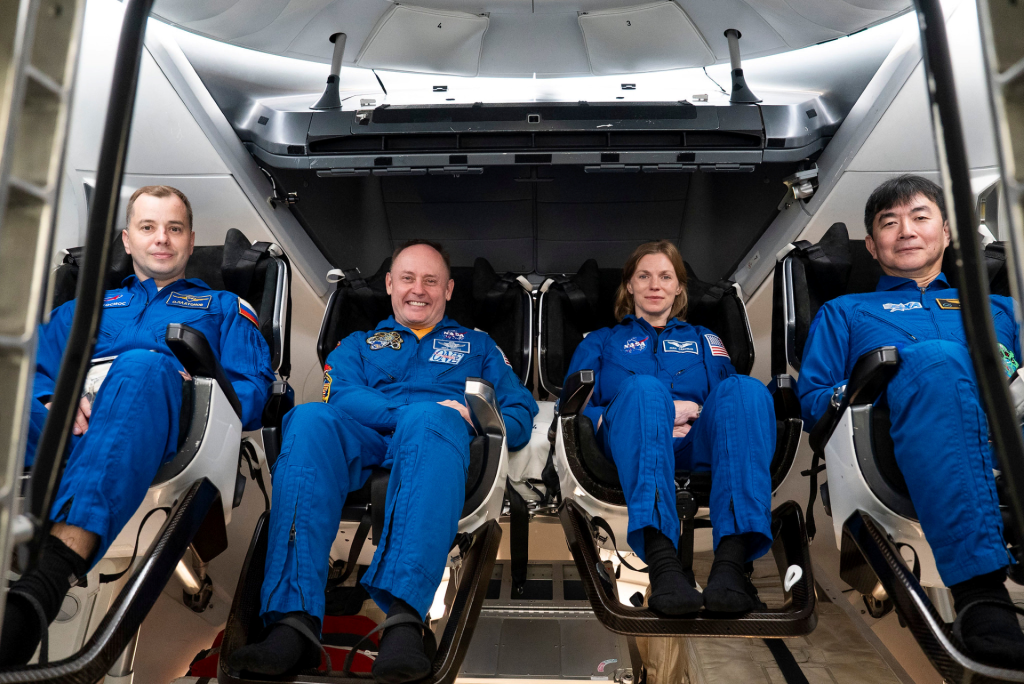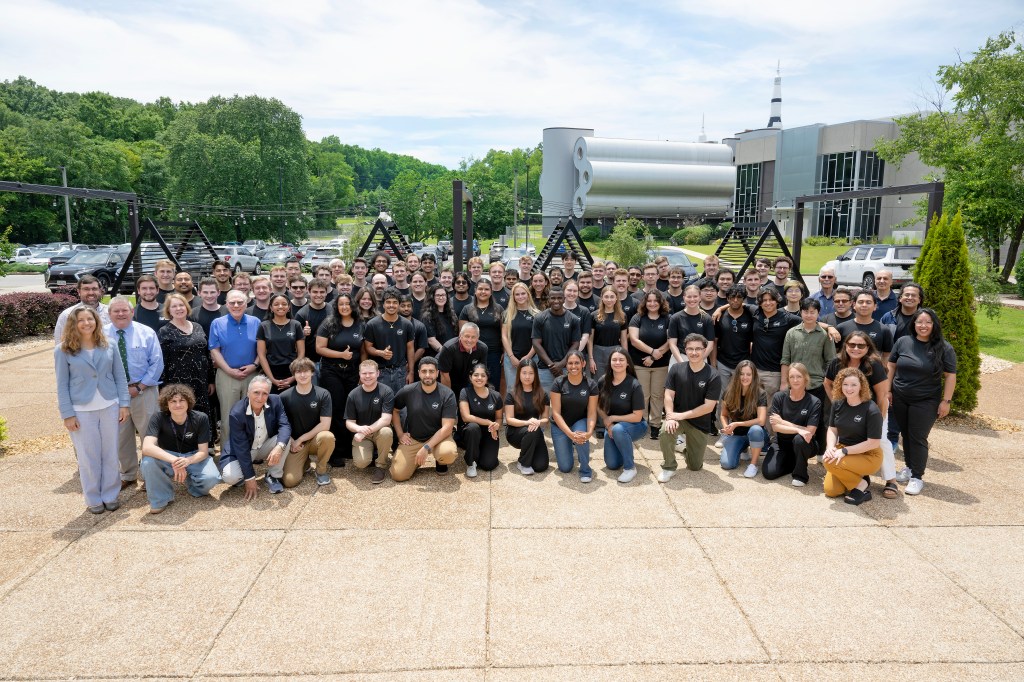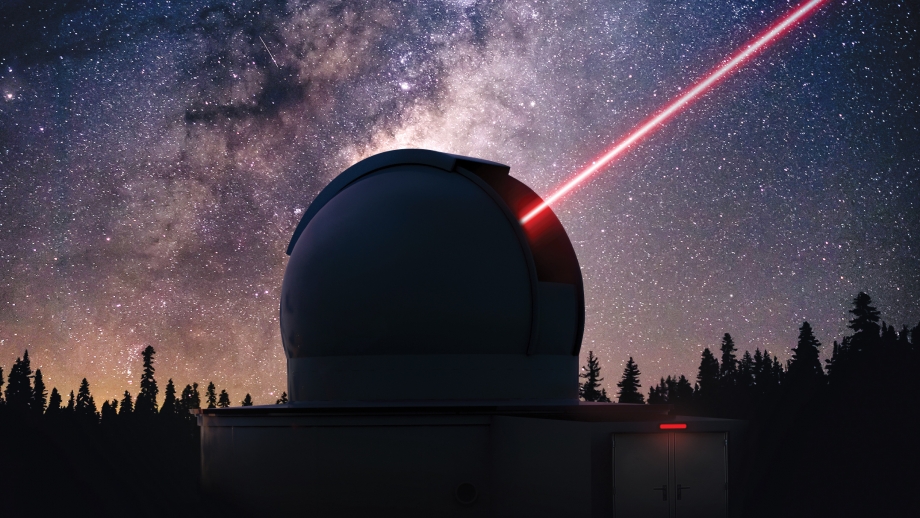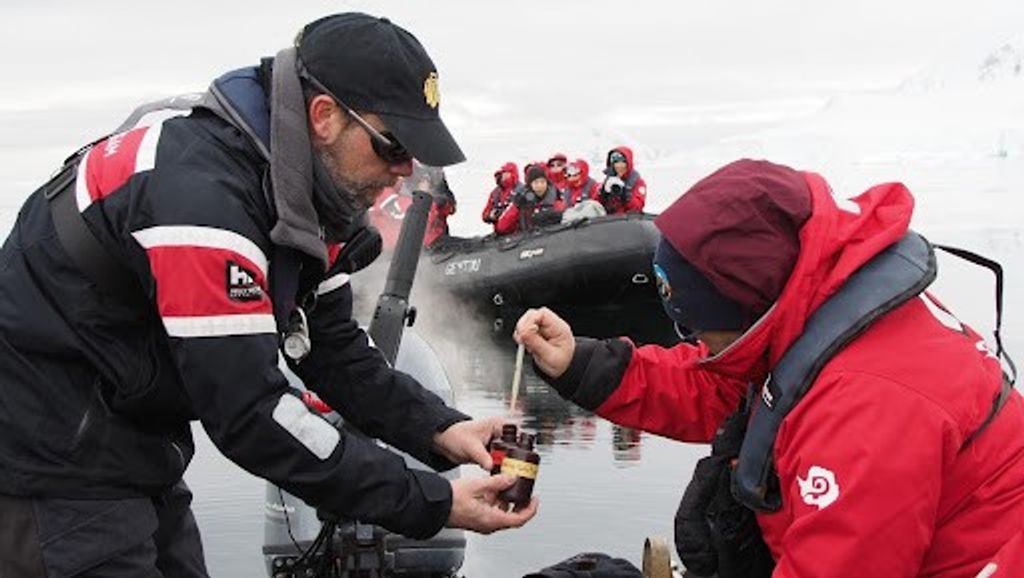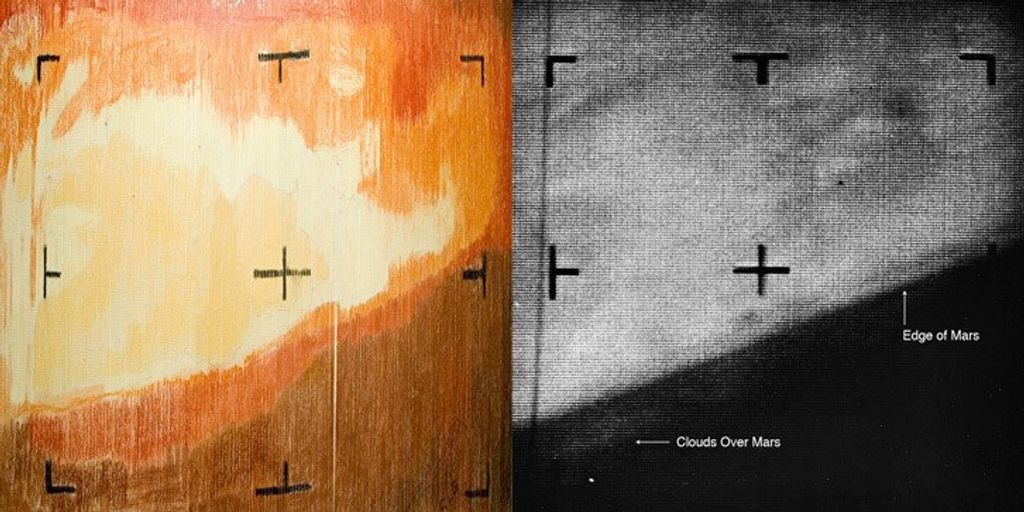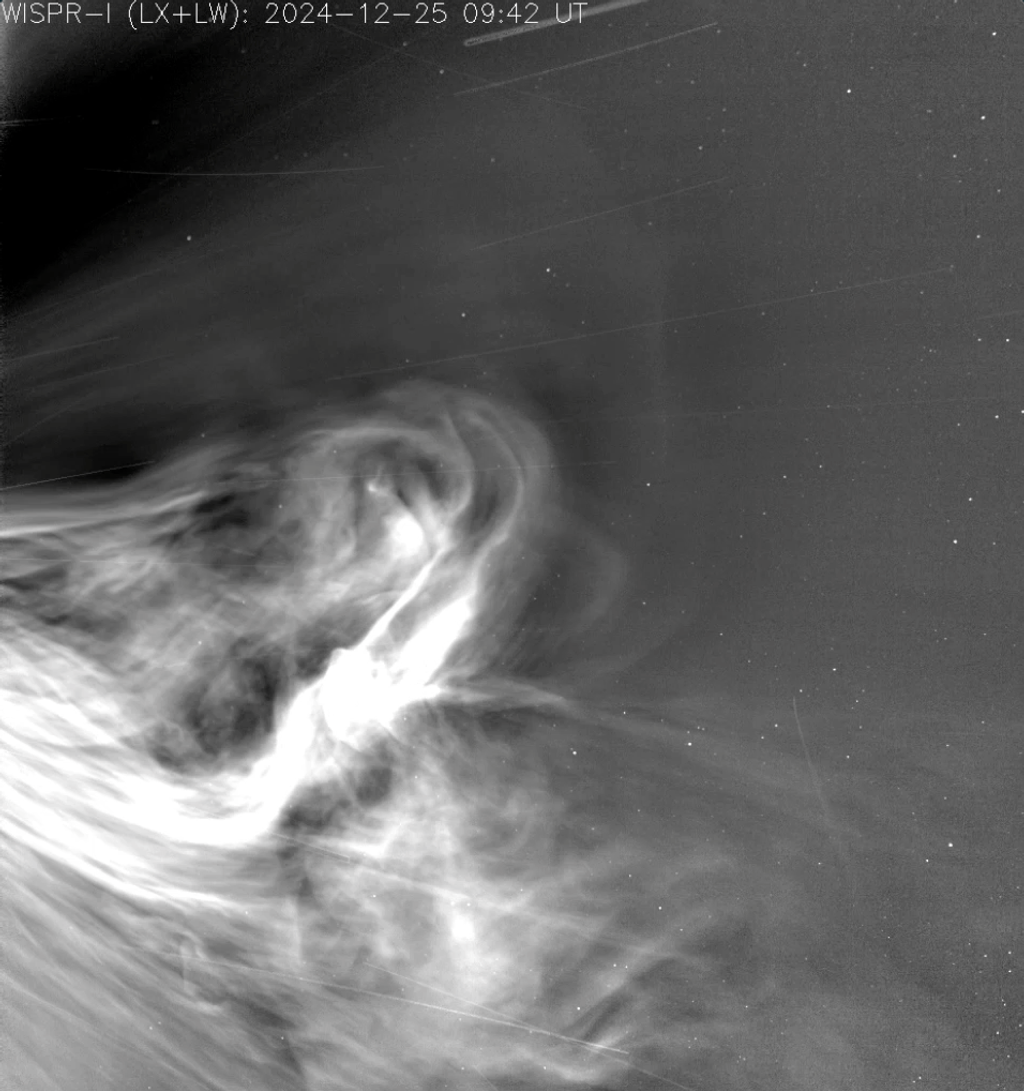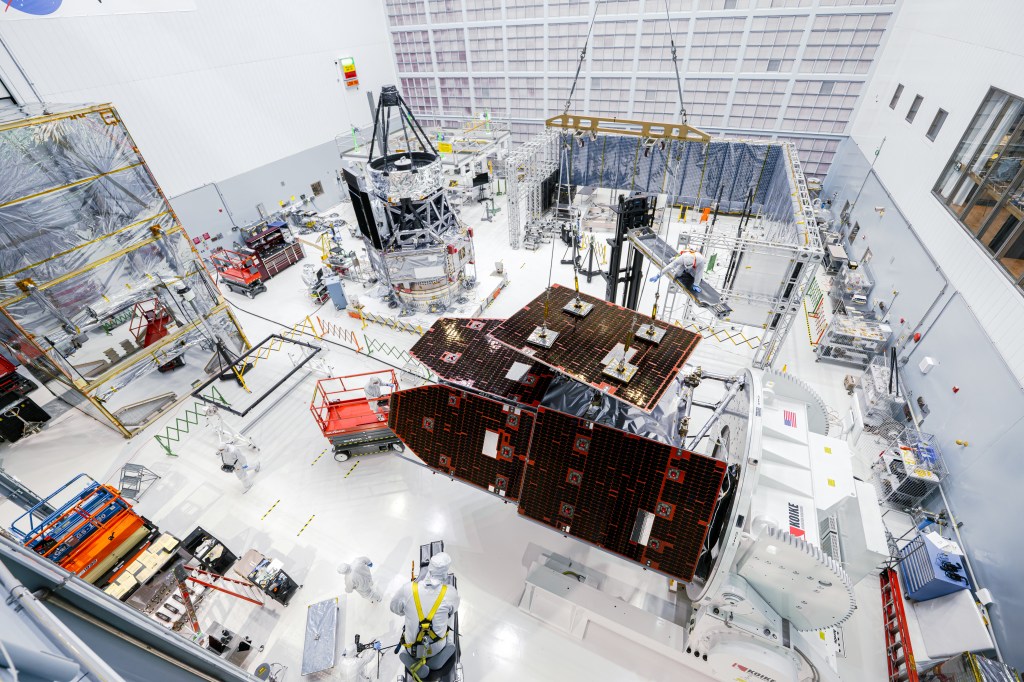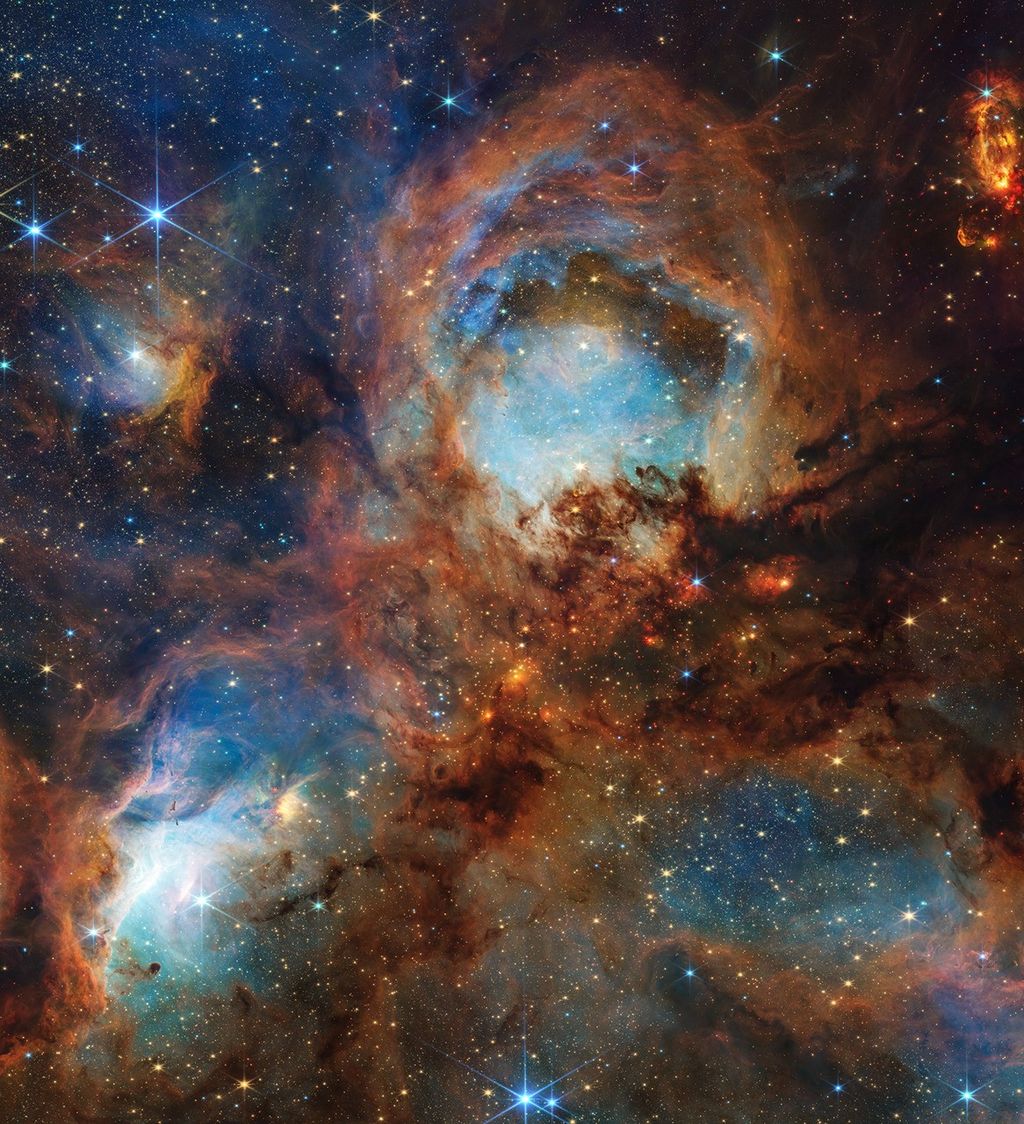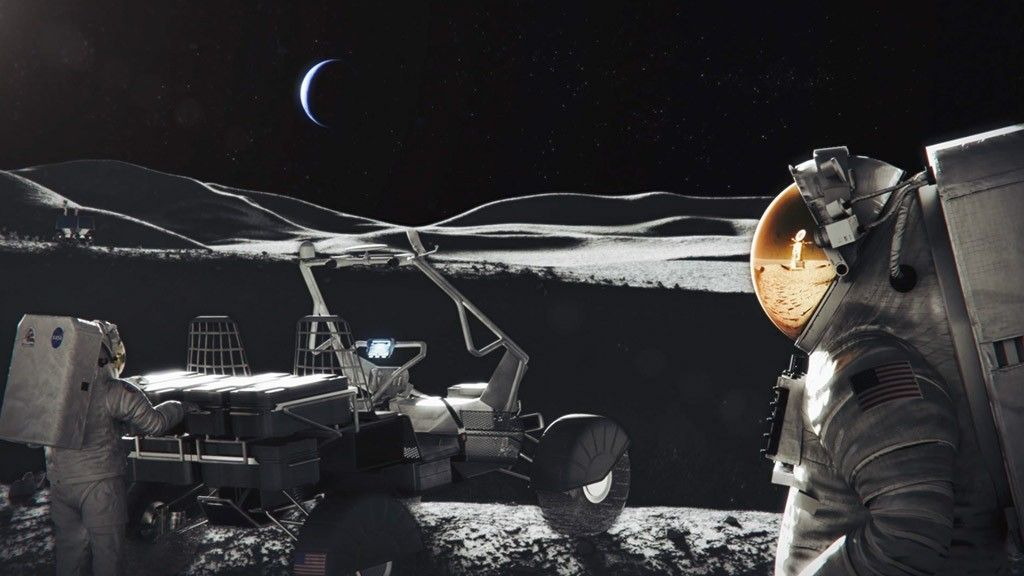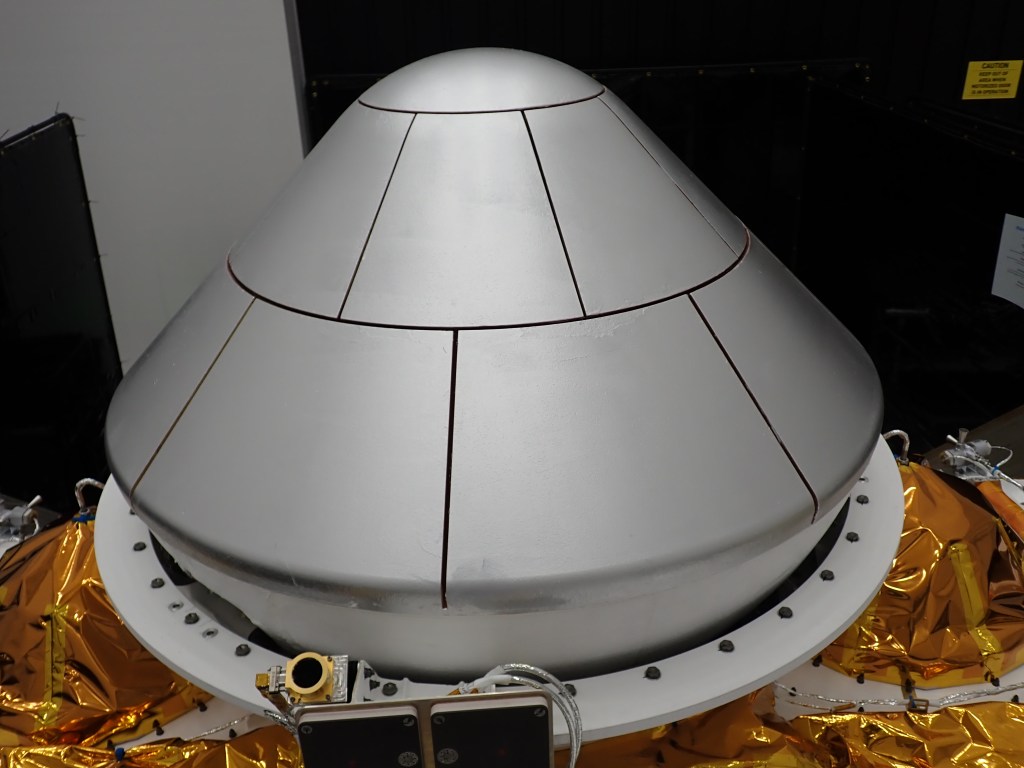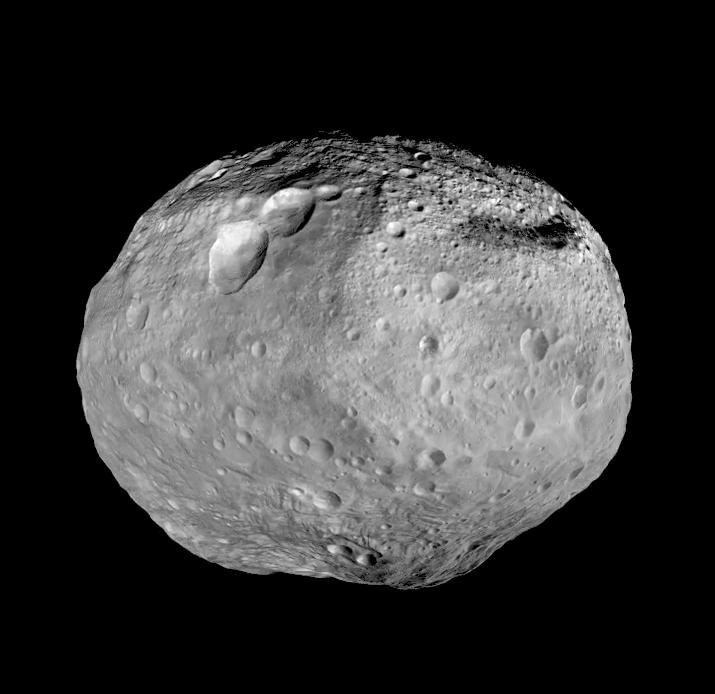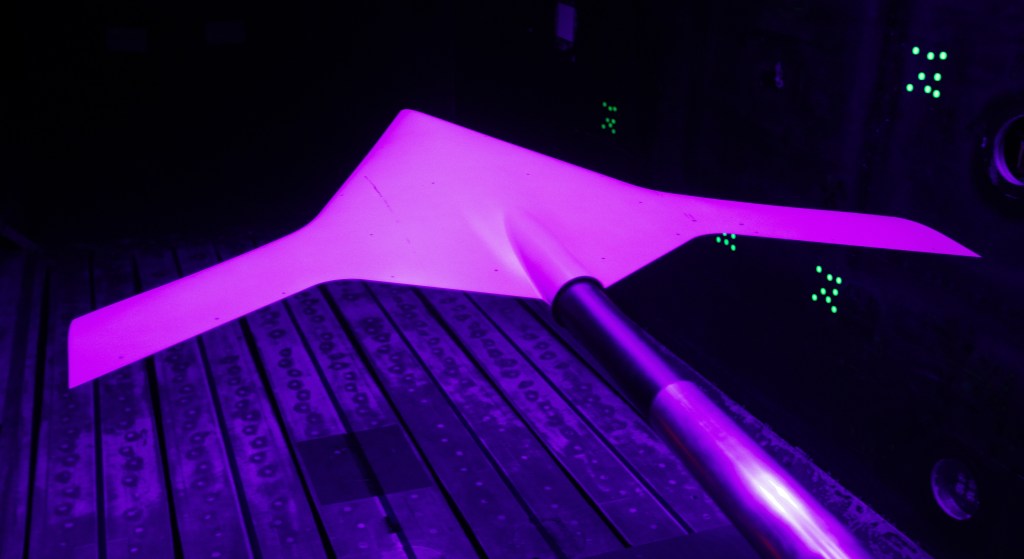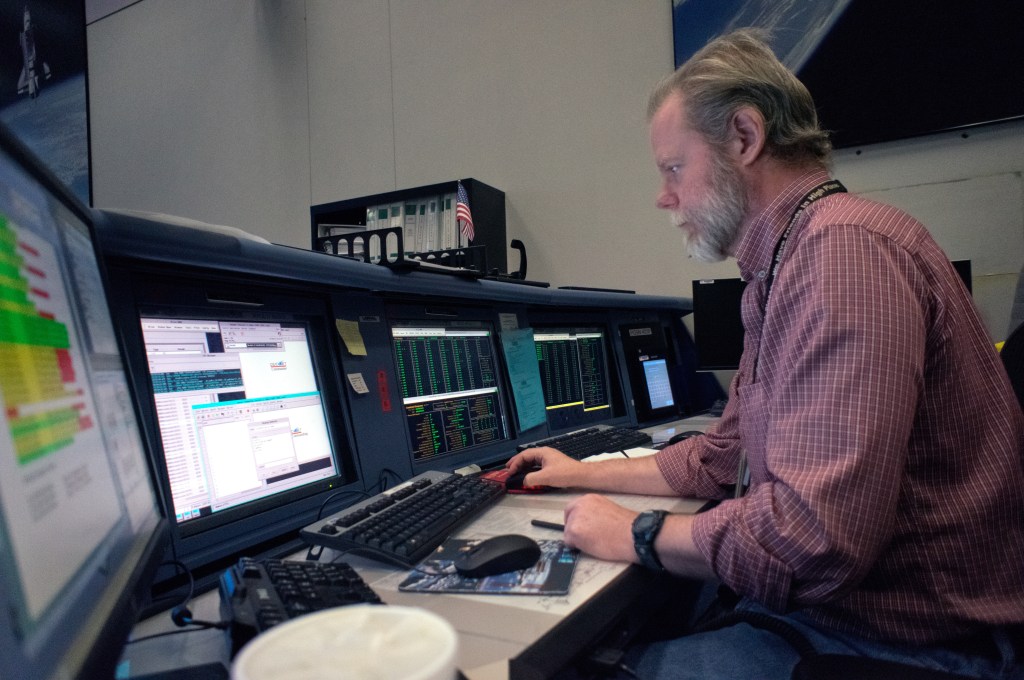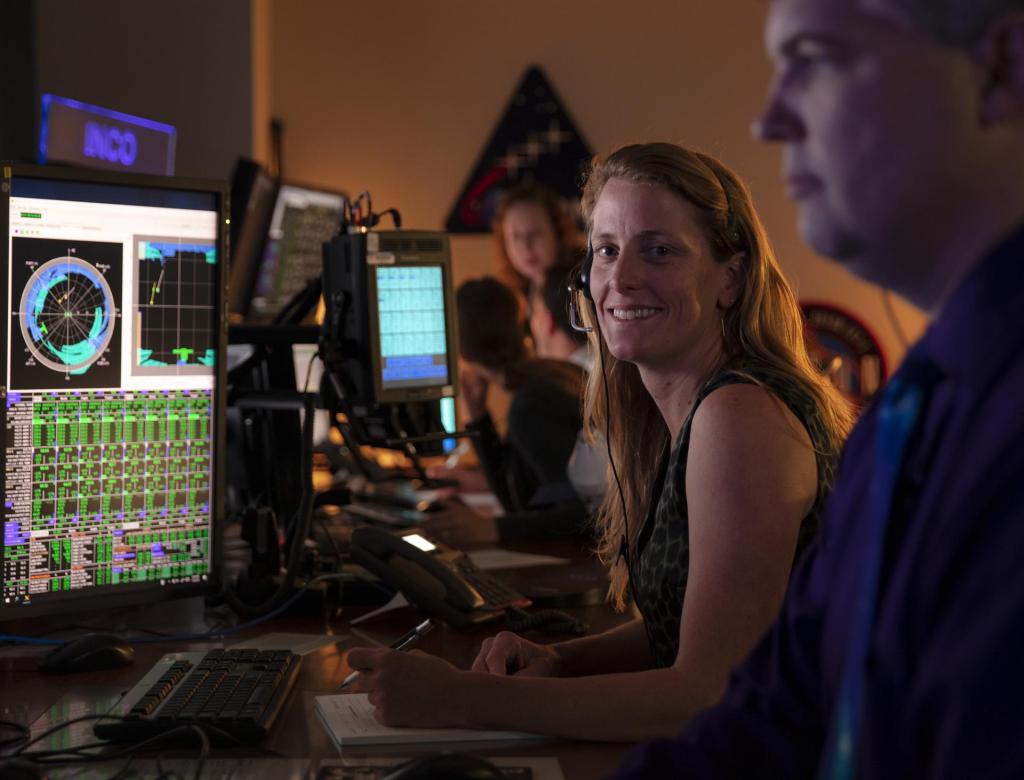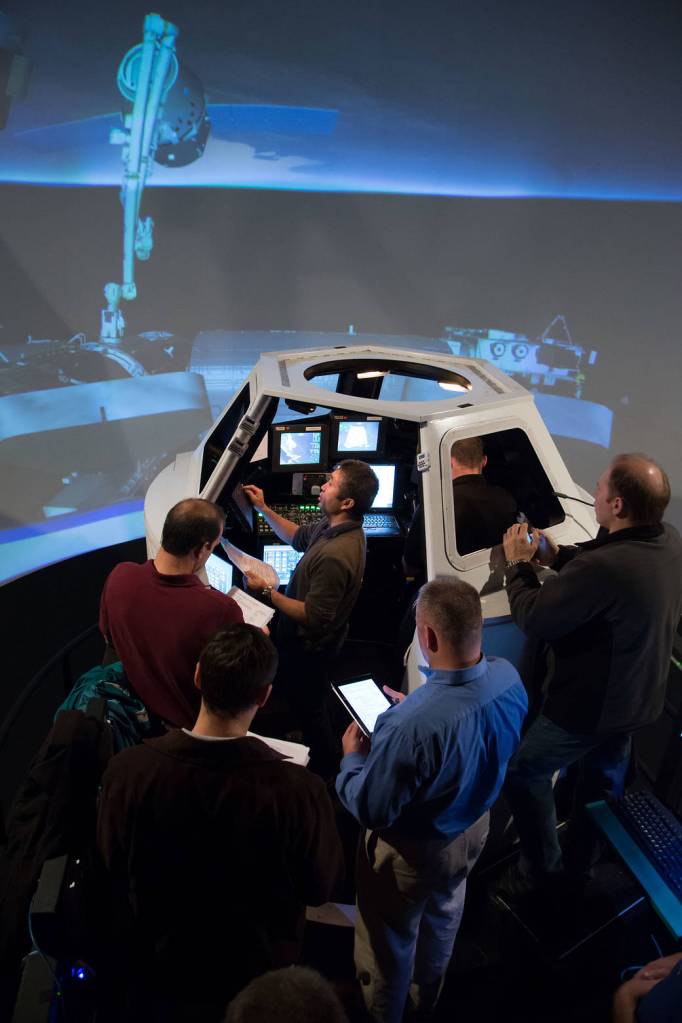Software & Autonomous Subsystems
Software and autonomous systems are crucial for human spaceflight as they enable precise control, automation, and decision-making, ensuring the safety, efficiency, and success of complex space missions. Johnson Space Center (JSC) is a leader in software and autonomous subsystems for human spaceflight, offering an array of capabilities for developing Class A, human-rated flight software and autonomous systems including performing insight/oversight of software developed for NASA spacecraft. Our expertise encompasses software development for flight and ground systems, real-time, mission-critical embedded software, software integration, and hardware-in-the-loop testing. As a Capability Maturity Model Integration (CMMI) Level 3 certified organization, JSC ensures excellence in software development, including the application of Human-rated Open Source Class A Core Flight Software (CFS) Framework. NASA JSC Spacecraft Software Engineering Branch provides world-class products, leadership, and technical expertise in software engineering, processes, and technology for human spaceflight programs. We invite our partners to leverage our advanced software and autonomous system capabilities, collaborating with us to enhance the reliability, efficiency, and innovation of future space missions.
Software Development and Testing
NASA JSC Spacecraft Software Engineering Team provides world-class products, leadership, and technical expertise in software engineering, processes, and technology for human spaceflight programs.
JSC’s Spacecraft Software Engineering Team develops flight and ground software for a variety of space vehicles and space assets, large and small, crewed, and un-crewed. We maintain a CMMI Maturity Level 3 rating for software (required for developing human-rated software at NASA). We enhance and apply the Core Flight System (CFS) product line for use on Programs such as Orion, Gateway, and Exploration Human Performance (EHP) in application areas that include spacecraft backup flight software, medical records management, autonomous control software, optical navigation, compact flight computer applications, and cubesats. As chairs of JSC’s Engineering Software Engineering Process Group (SEPG) and the broader JSC SEPG, we support the development of NASA software standards and provide guidance on the use and application of those standards. In conjunction with the JSC Safety Organization, we cooperate on software classifications, conduct safety criticality assessments for flight projects, and coordinate implementation of Center-wide software policies, process requirements, process improvements and training initiatives for both ground software and a variety of space vehicles.
Software Systems Management
NASA JSC Spacecraft Software Engineering Team provides Software Systems Management for human-rated space assets offering overall assessment of the safety and adequacy of the software and its ability to execute the Design Reference Mission.
JSC’s Spacecraft Software Engineering Team provides Software Systems Management insight and oversight of software artifacts developed for human-rated space vehicles and assets. We provide an assessment of the software requirements, design, code, test plan and results, and adequacy of simulation, test, and data management tools. Compliance with established standards is monitored and deviations adjudicated. Software safety issues and risks are identified throughout the software lifecycle ultimately leading up to a Certification of Flight Readiness (COFR) just prior to flight. We work actively with each contractor to resolve any outstanding issue to help ensure the success of the overall Program. On-console software system support is provided for each mission.
Artificial Intelligence/ Machine Learning
NASA JSC Spacecraft Software Engineering Team has been at the forefront of advanced technologies using intelligent systems to support human spaceflight.
JSC’s Spacecraft Software Engineering Team continues to investigate advanced technologies, including artificial intelligence (AI), to support many areas related to human spaceflight such as executing electronic procedures, with/without augmented reality capabilities, and hybrid reality systems to revolutionize the way NASA performs crew training, on-orbit operations, and vehicle design. Some areas of interest include:
- Spacecraft Design Process: Includes identifying issues/shortfall in the requirements, architecture, design, and test plan documents required during the vehicle development and testing process and focusing on improving the performance and efficiency of mechanical, power, propulsion, avionics, software, life support, and aeroscience.
- Automated Anomaly Detection and System configuration: Includes identifying vehicle anomalies using time-series data such as for augmenting Mission control console operations.
- Knowledge Retention: Includes developing a system that serves as a knowledge base that captures and preserves the expertise of subject matter experts, minimizing knowledge loss when experienced engineers leave.
- Office Automation: Includes the use of AI/ML for office tasks automation (meeting summary, email support, report generation, PowerPoint generation, etc.). This also includes using AI/ML tools to enhance software code development.
- Computer Vision: Includes object recognition, image annotation, and pose estimation for applications such as motion capture, medical image analysis and ISS systems/component identification.
- Large Language Models (LLMs): Includes development of systems that can serve as digital assistants for procedure development and procedure guidance. An example would be the creation of a digital physician that can support long duration missions.
- Extended reality (XR) support: Includes using generative AI to automate 3D object creation and insertion into XR environments.
The team is also providing leadership in advanced technology areas by:
- Developing advanced technology for vision, strategy and roadmaps that align with the engineering organization’s mission objectives.
- Staying abreast of AI research advancements, advanced technology and technological trends, fostering innovation within NASA and proposing novel applications to enhance mission capabilities.
- Providing technical expertise, guidance and project support to activities that can benefit from the infusion of advanced technologies.
- Fostering collaboration with internal NASA teams, industry partners, academia, and government agencies to leverage external expertise and resources in AI research and development.
- Identifying and helping to develop policies that promote transparency and responsible use of advanced technologies.
Related Patents
Advanced Humanoid Robotic Interface & Control
Advanced Robotic Sensing Technologies
Computer Vision Lends Precision to Robotic Grappling
Related Software
Generic Command and Telemetry Applications for the Core Flight Software Framework (CI-TO)
ISS Systems Integration Lab (ISIL) Operations Framework (RIM 10)
LAGER (Light-weight Accumulator Gathering Efficiently in Real-time)
